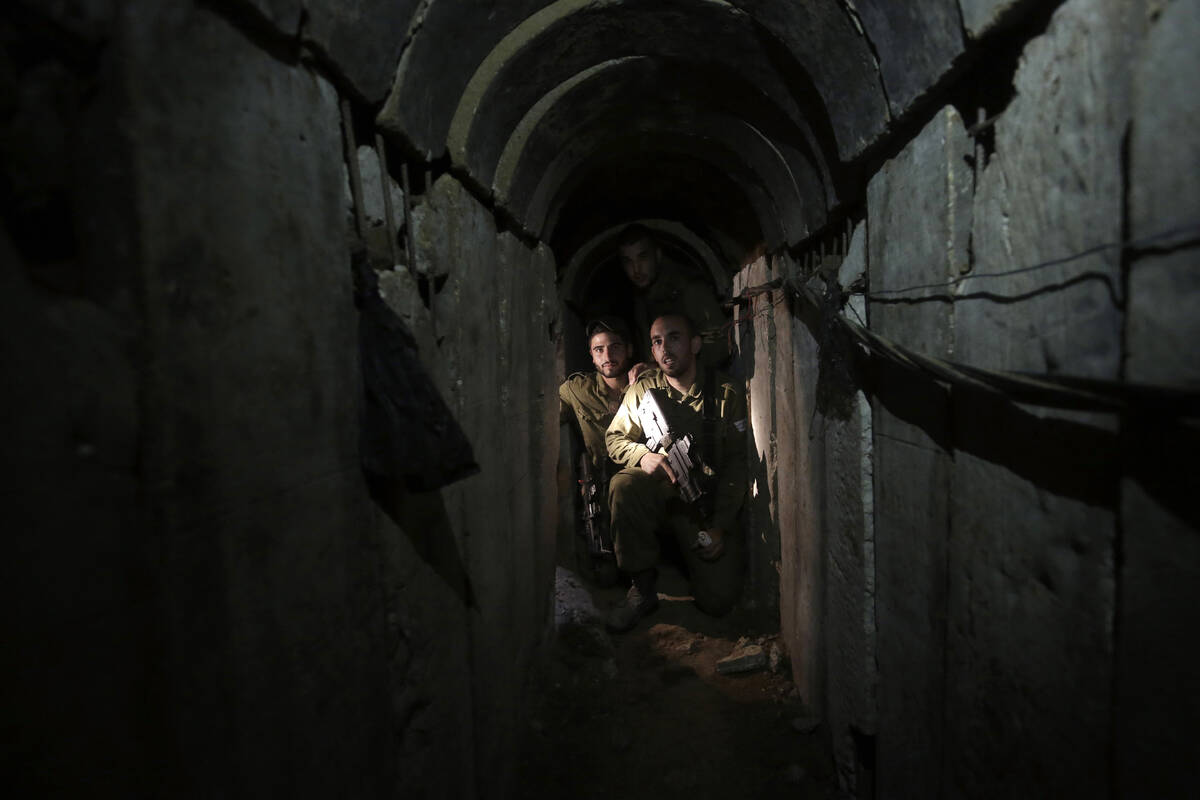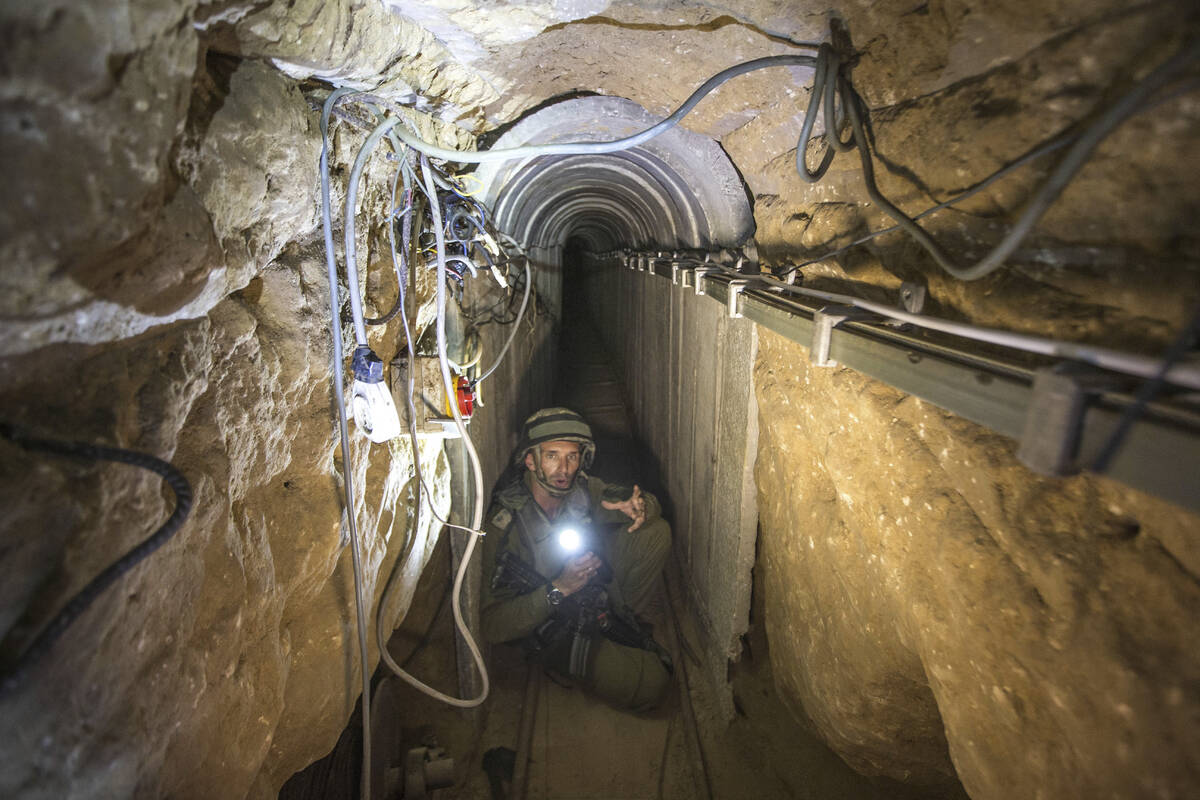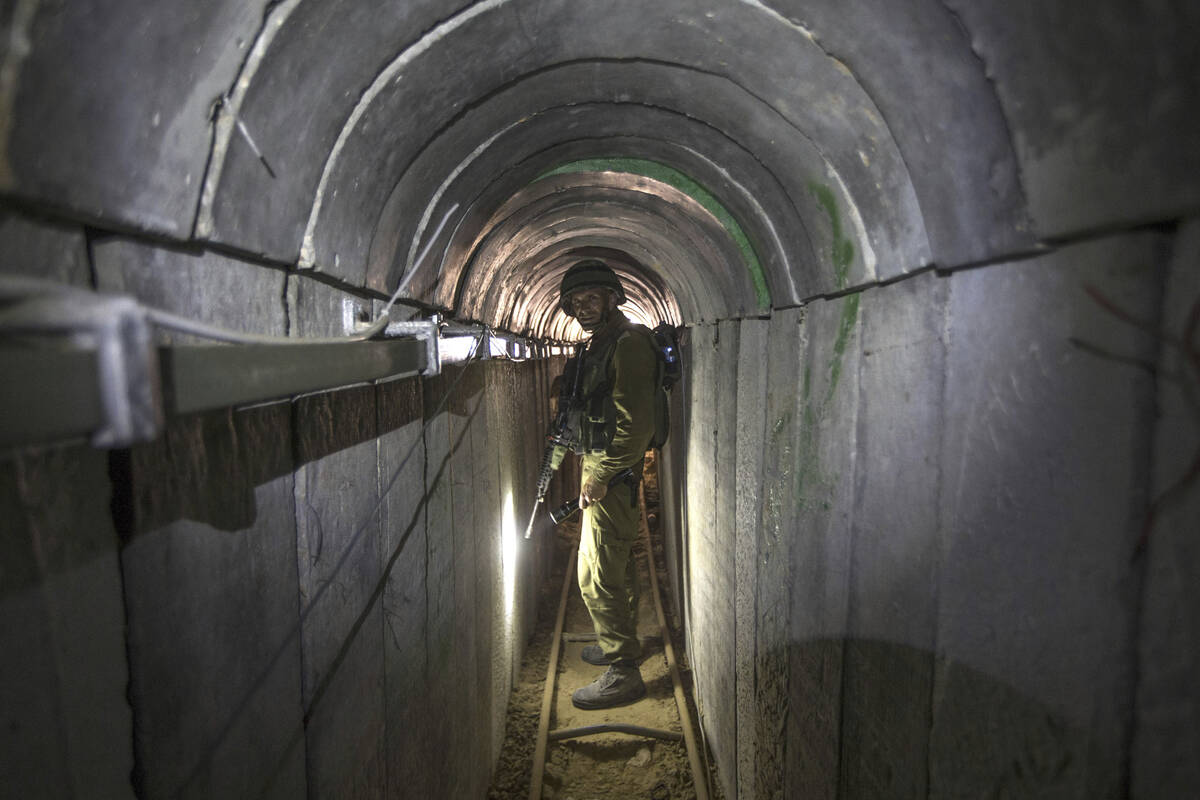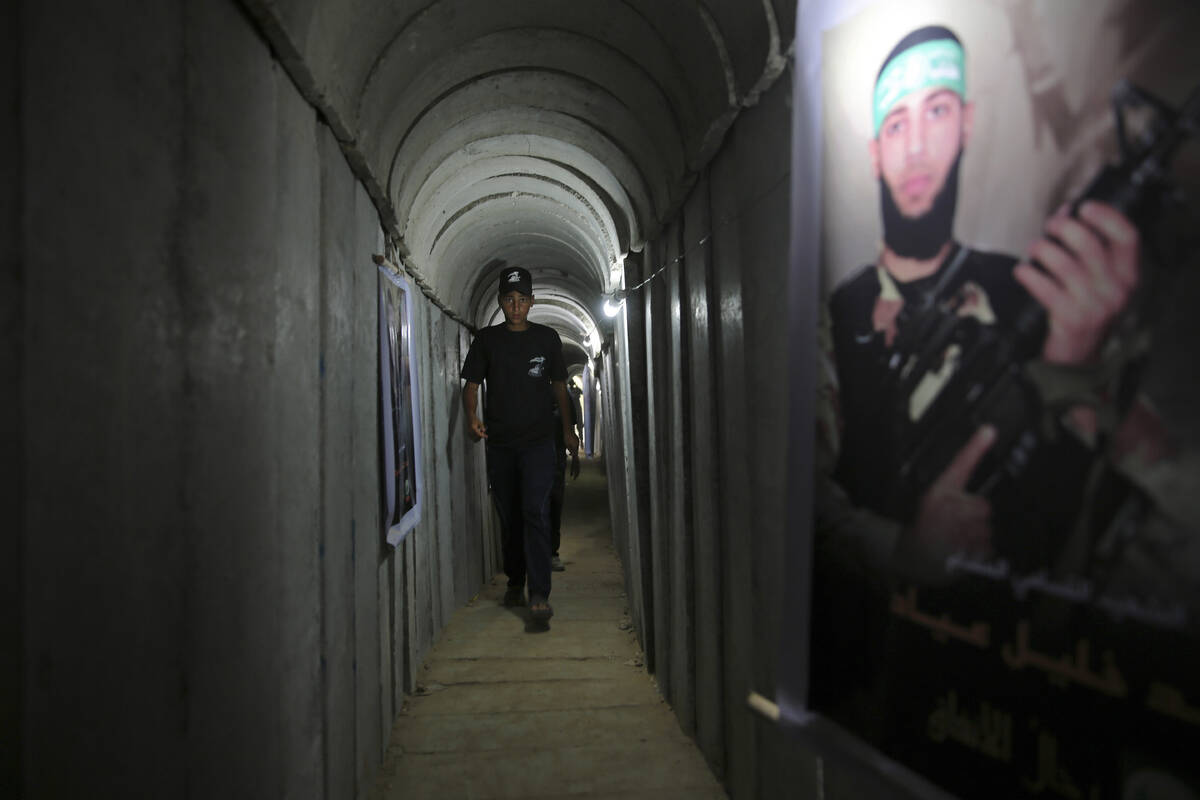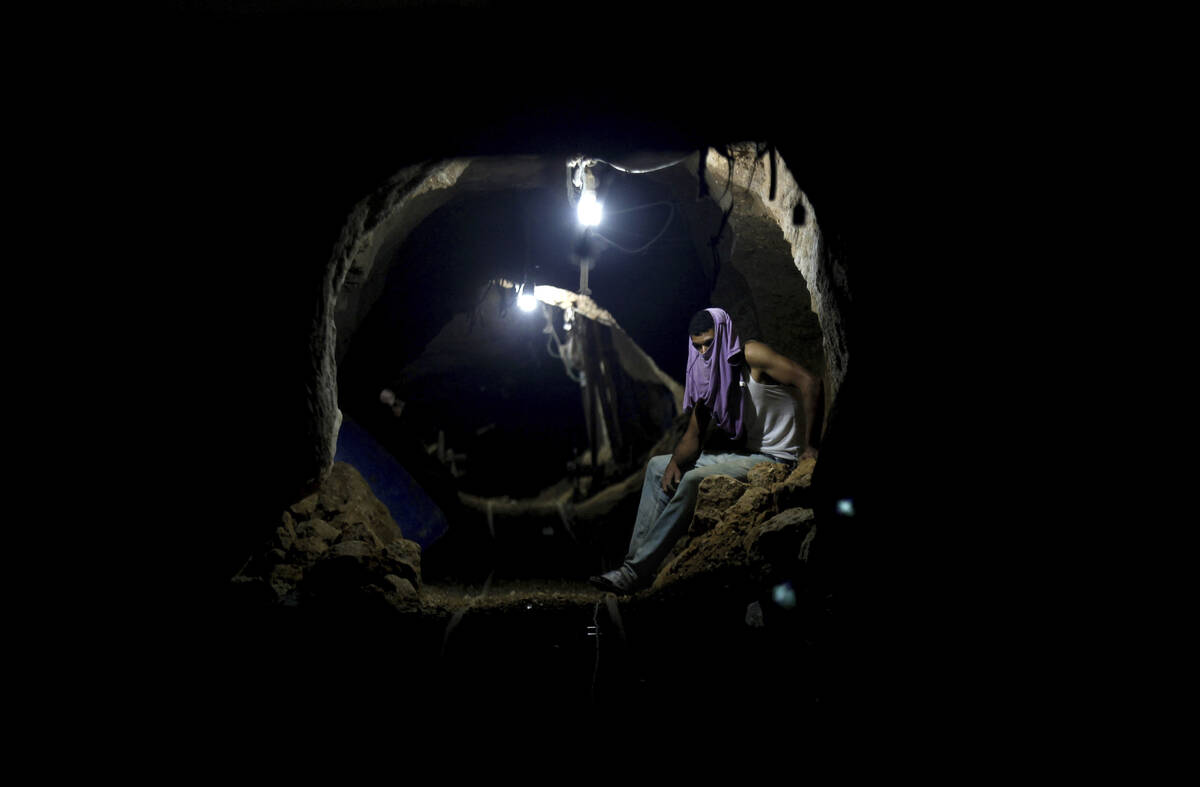Hamas tunnels pose big risk
JERUSALEM — As an Israeli ground offensive in the Gaza Strip looms, one of the greatest threats to both its troops and the 2.3 million Palestinians trapped inside the seaside enclave is buried deep underground.
An extensive labyrinth of tunnels built by Hamas terrorists stretches across the densely populated strip, hiding fighters, their rocket arsenal and more than 200 hostages they now hold after an unprecedented Oct. 7 attack on Israel.
Clearing and collapsing those tunnels will be crucial if Israel seeks to dismantle Hamas. But fighting in densely populated urban areas and moving underground could strip the Israeli military of some of its technological advantages.
“I usually say it’s like walking down the street waiting to get punched in the face,” said John Spencer, a retired U.S. Army major and the chair of Urban Warfare Studies at the Modern War Institute at West Point.
Urban defenders, he added, “had time to think about where they are going to be and there’s millions of hidden locations they can be in. They get to choose the time of the engagement — you can’t see them but they can see you.”
Overnight on Saturday, the Israeli military said its warplanes struck 150 underground Hamas targets in northern Gaza, describing them as tunnels, combat spaces and other underground infrastructure.
The strikes — what appeared to be Israel’s most significant bombardment of tunnels yet — came as it ramped up its ground operations in Gaza.
Hamas’ release on Monday of 85-year-old Yocheved Lifshitz confirmed suspicions that the terrorists had put hostages in the tunnels. Lifshitz described Hamas terrorists spiriting her into a tunnel system that she said “looked like a spider web.”
Clearing the tunnels with hostages trapped inside likely will be a “slow, methodical process,” with the Israelis relying on robots and other intelligence to map tunnels and their potential traps, according to the Soufan Center, a New York security think tank.
“Given the methodical planning involved in the attack, it seems likely that Hamas will have devoted significant time planning for the next phase, conducting extensive preparation of the battlefield in Gaza,” the Soufan Center wrote in a briefing. “The use of hostages as human shields will add an additional layer of complexity to the fight.”
The potential fighting facing Israeli soldiers also will be claustrophobic and terrifying. Many of the Israeli military’s technological advantages will collapse, warned Daphné Richemond-Barak, a professor at Israel’s Reichman University who wrote a book on underground warfare.
“When you enter a tunnel, it’s very narrow, and it’s dark and it’s moist, and you very quickly lose a sense of space and time,” Richemond-Barak told The Associated Press. “You have this fear of the unknown, who’s coming around the corner? … Is this going to be an ambush? Nobody can come and rescue you. You can barely communicate with the outside world, with your unit.”
The battlefield could force the Israeli military into firefights in which hostages may be accidentally killed. Explosive traps also could detonate, burying alive both soldiers and the hostages, Richemond-Barak said.
Even with those risks, she said the tunnels must be destroyed for Israel to achieve its military objectives.
“There’s a job that needs to get done and it will be done now,” she said.



